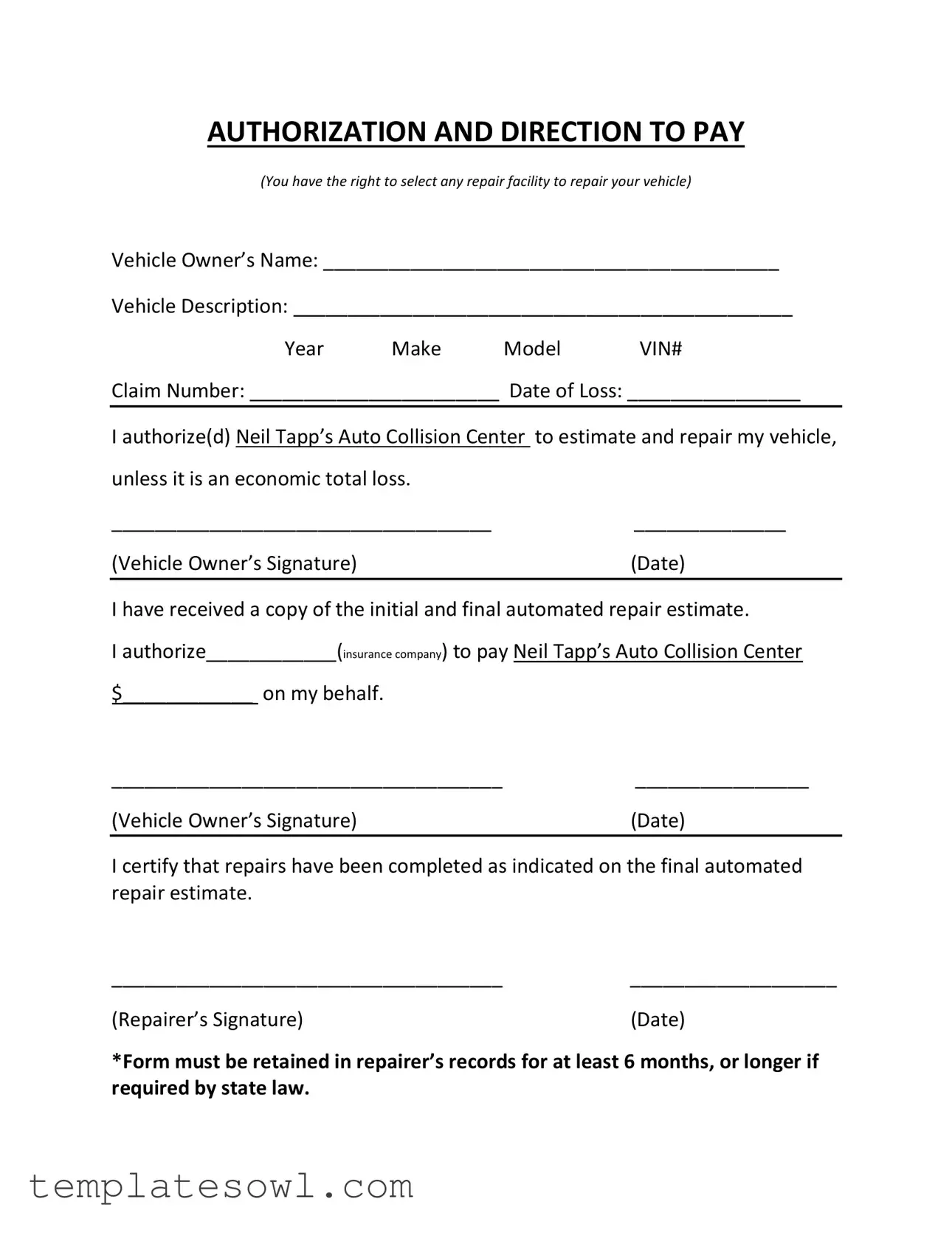Fill Out Your Authoization Direction Pay Form
The Authorization Direction Pay form is a document that allows vehicle owners to authorize a specific repair facility to handle repairs and receive payment directly from their insurance company. This form ensures that you have the right to choose where your vehicle is repaired, giving you peace of mind regarding the repair process. Ready to make the repair process smoother? Fill out the form by clicking the button below!
Launch Authoization Direction Pay Editor Now

